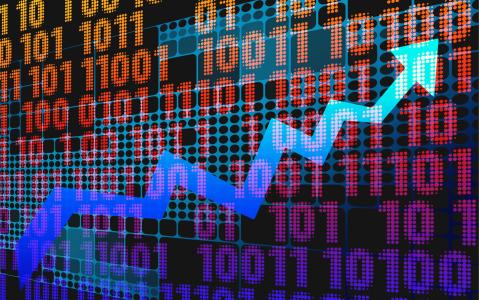
For 17 years, economist Nouriel Roubini has carried the moniker "Dr. Doom," a title cemented during the 2008 financial crisis. But today, his tone is shifting.
Once notorious for dire warnings, Roubini now predicts an economic revival in the U.S., driven by technological innovation and strategic energy advancements.
In a recent interview, Roubini rescinded his long-held recession prediction and instead highlighted an impending investment boom in tech and artificial intelligence (AI). By the end of this decade, he anticipates U.S. economic growth could double to 4% annually, with productivity surging to 3%. The S&P 500, he predicts, will deliver solid, high-single-digit returns annually in the coming years.
This outlook marks a stark pivot for an economist celebrated for identifying systemic risks. While Roubini insists he’s always been a realist, he attributes his newfound optimism to three transformative forces reshaping the economic landscape:
1. The Accelerating AI Revolution
Artificial intelligence, long touted as a game-changer, is emerging as a tangible economic driver far sooner than expected. In his 2022 book Megathreats, Roubini acknowledged AI’s potential to boost productivity and spur market growth. Now, with breakthroughs like ChatGPT gaining traction, he’s even more convinced.
Roubini sees AI, particularly humanoid robotics, reshaping industries and delivering economic benefits in the near term. This technological leap is fueling his bullish perspective on both economic growth and productivity gains, painting a picture of an economy poised to capitalize on innovation.
2. An Impending Energy Breakthrough
The promise of fusion energy is another pillar of Roubini's optimism. After decades of stagnation, fusion technology is gaining momentum as significant investments pour into its development.
Tech giants like Chevron and Google have recently funneled over $150 million into TAE Technologies, a firm aiming to debut a functional fusion power plant by the 2030s. Meanwhile, Type One Energy is targeting mid-decade deployment.
“We’re no longer in a fusion winter,” Roubini asserts, likening the renewed progress in energy tech to AI’s rapid ascent. A viable fusion energy solution could redefine global power systems and provide a massive boost to the U.S. economy, he explains.
3. Markets Contain Policy Extremes
Roubini also sees economic resilience in how markets react to political challenges. For example, former President Donald Trump’s aggressive trade policies have often been tempered by market responses, with sell-offs signaling disapproval and forcing recalibrations.
Roubini cites instances like Trump’s “Liberation Day” tariffs, where market backlash prompted a 90-day pause and softened rhetoric on Federal Reserve Chair Jerome Powell. “Bond vigilantes are some of the most powerful actors in the world,” he notes, emphasizing the market’s role in balancing policy extremes.
Though Roubini acknowledges trade tariffs could shave a modest 0.06% off annual GDP growth through 2035, he believes advancements in AI and quantum computing far outweigh these drawbacks. By decade’s end, he expects these technological gains to offset trade disruptions and push growth into a robust trajectory.
A Balanced Perspective
Despite his optimistic tone, Roubini retains a cautious outlook on potential global challenges. He warns of risks like escalating stagflation driven by tightened migration controls, rising government debt, and geopolitical tensions between the U.S. and China.
“There’s still plenty that could go wrong,” he admits, highlighting scenarios such as a collapse in the U.S. dollar’s value or the failure to resolve trade conflicts with China, which could lead to a prolonged cold war.
Recession Risks Fade
For now, however, Roubini assigns just a 25% probability to a U.S. recession, down sharply from earlier forecasts. Even if one materializes, he predicts it will be shallow and brief. With the Federal Reserve poised to cut interest rates and tech advancements fueling long-term growth, the economy appears well-positioned to weather potential downturns.
This tempered optimism marks a significant shift for Roubini. While he maintains his trademark vigilance on systemic risks, his embrace of transformative forces like AI and energy innovation signals a hopeful outlook for wealth advisors and investors seeking long-term growth opportunities. As the U.S. transitions into an era of technological and economic renaissance, Roubini’s insights serve as a guiding narrative for those navigating this evolving landscape.



